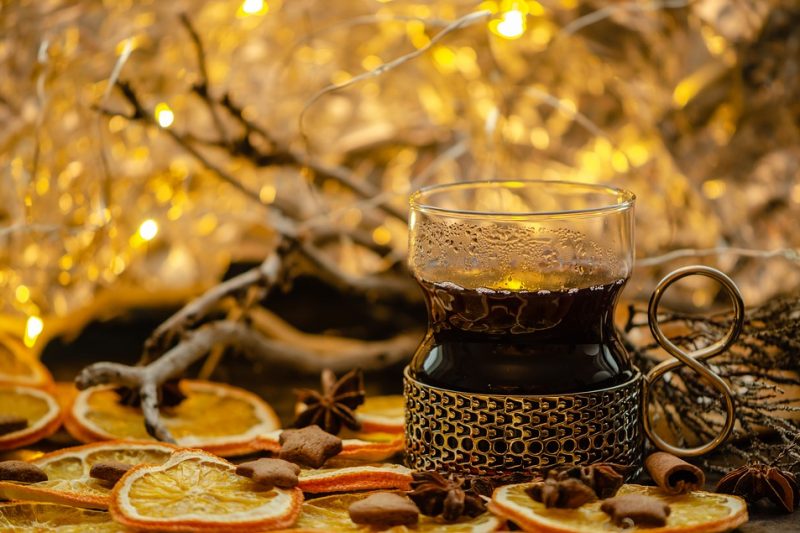How about if, during a visit in winter at a Bordeaux chateau, the owner offers to drink a glass of mulled wine after having walked the cellar ?
At the risk of offending purists, I’ve chosen this skiing week holiday to drink wine at a totally incongruous temperature ! Does this mean to insult the precious nectar? Mulled wine is it in itself a sacrilege?
Criticized by some people, mulled wine has though the merit to reinvigorate skiers and as such, must be assessed for what it is worth. As its name suggests, wine remains the origin of this drink, although it is too often used with bad wine, hence a known heartburn risk.
Therefore, always eager for new experiences to live, I decided with some friends winemakers to try magnifying this drink, focusing on the core product, namely wine.
Our first premise was therefore to use good wines. Moreover, it being understood that each wine has its own characteristics and especially its flavour. The second one was to have consistency between the specific wine aromas and spices used in the recipe.
Thus, we decided to taste three different mulled wines:
– The first one is a Fronsac, woody wine, roasted, red fruits associating spices “full-bodied” pepper-type, cloves and cinnamon and thus a little bit of cognac
– The second one is Puisseguin Saint-Emilion, a fruitier wine, focusing our “seasoning” on milder spices like ginger, orange peel, cinnamon and cardamom.
– And the last one is a Sauternes, this time also cinnamon, vanilla and honey replace sugar.
That’s not very surprising, the only thing these three wines had in common is to be tasty when drunk hot. But we can’t know which one has been the most popular, it’s an entirely different debate ! Indeed, everything is matter of taste, and if I preferred the “hot Fronsac”, some women’s tasters particularly enjoyed the sweetness of “hot Sauternes wine”, too sweet for me.
However, we all agreed to say that we never drank as good mulled wine and especially we really enjoyed this tasting accompanied by some diced of Tome de Savoie (french cheese).
What can we conclude about this experience and this tasting of mulled wine ?
- First, the wine chosen for this drink is essential. Our friends from Savoy and Alsace would do well not to neglect this basic product
- Secondly, the production of mulled wine is possible with all types of wine, red or white. The most important is to adjust spices to the characteristics of wine.
- Thirdly, to discover the name of wine behind this or that mulled wine, the wine lover or winemaker must be very strong in tasting !
Thereafter, we asked ourselves whether a winery was able to expand its wine by offering ITS mulled wine. Admit that it would be terribly daring to offer its guests or customers a glass of mulled wine during a visit… Even if the idea is fun, it’s still totally unreal because the image of mulled wine still involves negative prejudices. This drink will remain a fun and pleasant winter digression for the wine lover I am.


